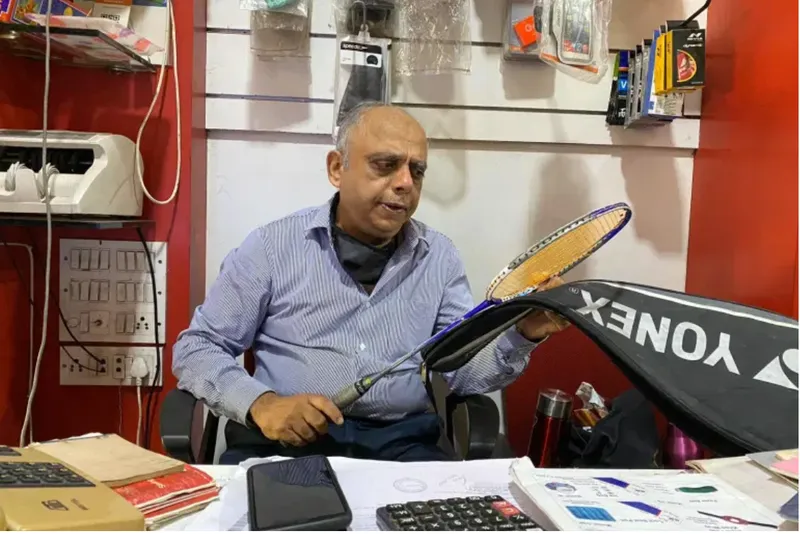How MSMEs can convert COVID-19 challenges into opportunities
COVID-19 has changed the way small businesses function in India. But, companies can learn from this pandemic to turn disruption into opportunities.
In the financial year 2020, the total number of MSMEs (Micro, Small & Medium Enterprises) in India stood at over 63 million units.
Overall, MSMEs contribute around 6 percent of the manufacturing GDP (Gross Domestic Product) and about 25 percent to the service sector, according to data from the Confederation of Indian Industry. More importantly, these businesses employ some 120 million people and contribute around 45 percent to the total exports from India.
The COVID-19 pandemic hit the Indian economy, which had already been suffering from a slowdown, hard. Almost 80 percent of Indian companies witnessed cash flow difficulties, and over 50 percent faced operational issues. Earnings of the Indian MSME sector were impacted by 20-50 percent.
Facebook's Global State of Small Business Report highlighted that about 45 percent of the MSMEs in India saw a decrease in employment, and the closure rates of SMBs in February 2021 rose to 32 percent compared to 24 percent in October’ 20.
While the pandemic has changed how businesses operated in India, it has also forced companies to leapfrog into the digital age, opening new opportunities. Small to medium businesses (SMBs) are increasingly tapping into technology solutions to solve business pain points.
7 sectors where SMBs can find a silver lining amid the chaos are:
Retail
The retail sector has probably been the most disrupted and most transformed sector during the pandemic. Starting from March 2020, COVID-19 protocols enforced by the government virtually stopped the businesses in physical retail, kirana, and mom and pop shops.
Although many businesses recovered by the following Diwali period in November 2020, several had to incur heavy losses. Smart retailers who understood the pulse of the situation rapidly sought to bring in the solutions to transform their business to online ecommerce marketplaces or hybrid models.
Although it might have taken some time for small and medium players to adopt the technologies initially, the transformation is expected to stay and even help small businesses compete with large retailers.
In 2020, India's retail sector was estimated at $883 billion, with grocery retail accounting for $608 billion, according to Forrester Research. The market is projected to reach about $1.3 trillion by 2024, opening a window for SMBs to venture into or transform the existing business into an online or hybrid model.
Healthcare
The COVID-19 pandemic created substantial pressure on healthcare systems worldwide. While the sector was supporting COVID-19 patients, other patients could not find care due to a lack of beds, doctors, and healthcare workers. This prompted healthcare providers to adopt telemedicine.
Emerging technologies such as artificial intelligence (AI), the Internet of Things (IoT), machine learning, augmented reality, among others, are playing pivotal roles in pushing healthcare to the next level. Technology SMBs must capture the huge demand for various technology solutions coming from the healthcare sector to meet the expectation of patients now and in the future.
Financial services
Online financial services were in existence even before the COVID-19. However, changes in customer behaviour, particularly during the pandemic, have accelerated the popularity and growth of fintech companies that provide services such as banking, investing, borrowing, insurance, cryptocurrency trading, among others.
In tandem with the shifts in retailing models, non-cash financial transactions have seen growth in India. Cash tractions have decreased to 89 percent in 2020 from 100 percent in 2010, according to the 2020 McKinsey Global Payments Report.
While urban India is going cashless, rural India is still heavily dependent on cash transactions and offline banking services, meaning that SMBs can tap into this sector to deliver financial technology solutions.

Education
The pandemic shut down educational institutions, from schools to colleges to tuition and coaching centres. The lockdowns led to a rise in demand for online learning. Programmes that focus on tuitions, upskilling, coaching for entrance and competitive exams and higher education can be delivered through edtech platforms.
This unfolds opportunities for SMBs to venture into the edtech business segment and as well provide technology solutions to existing and new entrants in the edtech space.
Supply Chain and Logistics
Supply chains across the country initially sagged under the weight of COVID-19 led demand. However, players in the segment were quick to respond to the challenges.
The use of emerging technologies has improved the efficiency in warehousing, logistic movements, last-mile delivery, reverse logistics, among others. The adoption of the concept of micro-fulfilment has changed order delivery, particularly by solving the pain point of last-mile delivery.
SMBs leveraging technologies such as AI and Internet of Things IoT have the potential to deliver services to manufacturers to help them deal with future black swan events.
Manufacturing
COVID-19 affected production and supply chains, resulting in increased costs — both variable and fixed. The increase in variable cost was due to disruption in supply chains and logistics, whereas the spike in per-unit fixed cost was due to the under-recovery of cost thanks to lower or no production.
Though not possible with certain sunk costs like investments in plants and equipment, many other costs on manpower, technology tools can be converted to variable costs through leveraging marketplace options and automation.
In addition, the concepts like lean manufacturing, contract manufacturing, white-label manufacturing along technology adoption will help SMBs tide over the pandemic crisis and as well make them smart to compete with large enterprises domestically and globally. As businesses emerge out of the pandemic and re-orient themselves, the best among them will survive and grow.

SaaS
The emergence of cloud computing paved the way for the adoption of digital solutions. Companies are happy with this model as it converts the expenses from Capex nature to Opex by way of subscription or pay-as-you-use model.
Technology SMBs that understand the pains of each function in each industry stand to gain from abundant opportunities the new model has ushered in. Likewise, non-technology companies can leverage tools available in SaaS (software-as-a-service) form to drive their business to new heights without the need for huge initial investments.
The COVID-19 pandemic has exposed the vulnerabilities of several organisations, however, it has also shown the resilience of the Indian MSME sector, which continues to be the bedrock of the Indian economy.
SMB cost structure remains a key advantage over that of the large enterprises. Companies that can sense the opportunities and come up with solutions to take advantage of the opportunities have the ability to compete with larger enterprises, domestically and globally.
YourStory’s flagship startup-tech and leadership conference will return virtually for its 13th edition on October 25-30, 2021. Sign up for updates on TechSparks or to express your interest in partnerships and speaker opportunities here.
For more on TechSparks 2021, click here.
Edited by Affirunisa Kankudti









